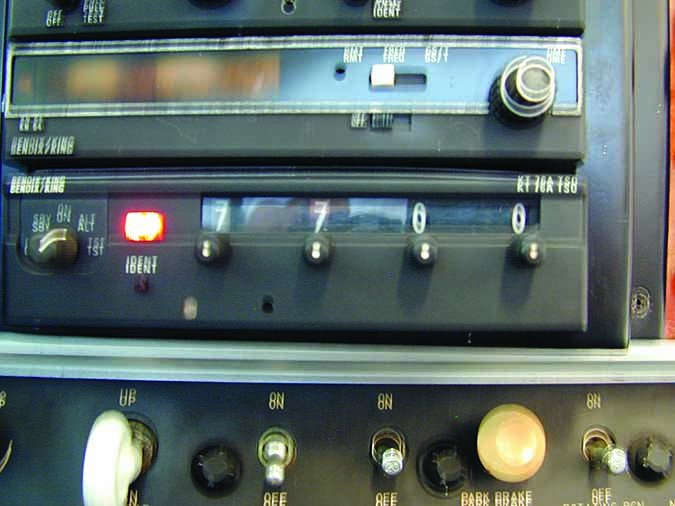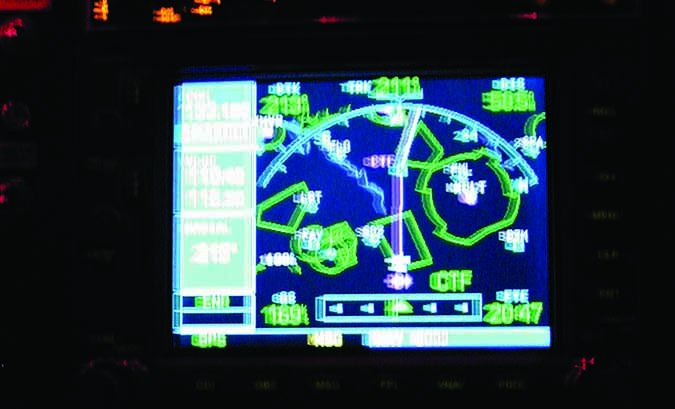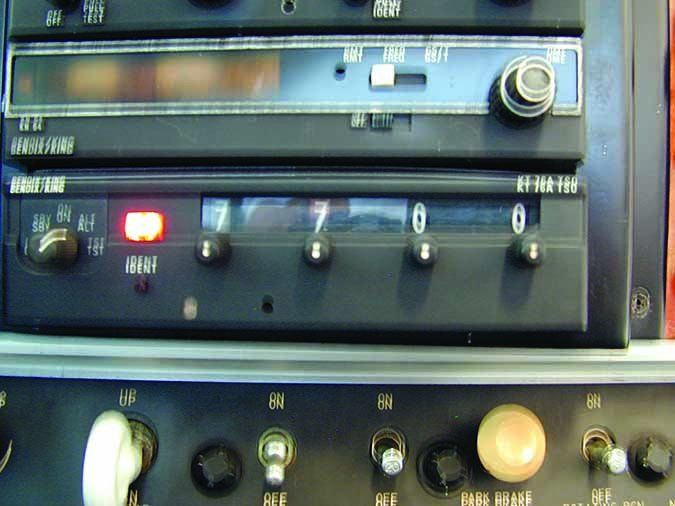Sometimes the real world is unforgiving, especially when it comes to airborne system failures. None of us want to have these kinds of firsthand, real-world learning experiences, but it is helpful to read about them and try to learn something. When it comes to airborne electrical issues, I believe I may be the “chosen one” when it comes to experiencing issues and failures from which we all can learn.
Call it luck or fate, but I’ve have had three airborne electrical component failures in two different airplanes, each of which left me with nothing but battery power. One of these three events involved an overcharging situation. No sheet metal was bent, thankfully, and all such events ended as I wanted. Here is what I have learned.
IMC Electrical Failure
On the first occasion, I was on an IFR flight plan departing into an 800-foot ceiling on my way to a destination reporting clear skies. At some point, I would clear the fog layer covering the inversion and find those clear skies, I just didn’t know exactly where the layer would burn off. On departure I passed through the 500-foot-thick layer and was soon in VMC on top. Tops were at roughly 6500 feet and I was cruising along at 8500 with nothing but blue skies above me and a flat layer of white tops 2000 feet below.
The Cessna Turbo 206 Stationair I was flying had a 150-amp electrical system designed and installed to feed some serious airborne imaging equipment. A bus bar split 70 amps to the main avionics bus—which included an IFR-rated Aspen glass panel—and 80 amps to a separate circuit designed to feed power-hungry Lidar equipment. The system was FAA-approved, but was recently installed and we were still working out the bugs. For some reason, the alternator field would randomly shut off. The error was not repeatable. Every time it happened, the avionics guy tweaked something and we crossed our fingers that it worked. After the last tweak, we were confident we had licked the problem. We hadn’t.
At the time of the failure, I was comfortably VFR on top. I was confident that the layer between me and the ground was the same 500-foot inversion layer I departed through. Plus, I assumed it was burning off, and I was headed toward the clear side. The Aspen began displaying a clock, counting down how much battery time remained. I turned everything off but the Aspen and my Garmin 430.
While I knew clear skies were somewhere ahead of me, I started getting anxious when the count down on the Aspen showed 45 minutes of backup battery remaining. I decided to do a precautionary landing at the nearest airport that had services. As an added incentive, I had long wanted to meet the airport’s mechanic, and it was an excuse to shoot an approach into actual IMC passing back through that easy little 500-foot layer.
I was right over the initial fix for the GPS approach when I called Center to explain my situation and change of plans. From my position over the initial fix, I requested the approach. Center, however, told me I would have to be routed back to one of the initial approach fixes 10 nm away before I could return to my current position 2000 feet lower. The whole route outbound and inbound would be VFR on top, and I was right over the top of the point where I would ultimately end up to get my step-down into the clouds. With 45 minutes of battery left and a 500-foot layer between me, VFR and a mechanic, the full approach seemed excessive.

The E Word
I declared an emergency to save the outbound and inbound legs and 12 minutes of my 45 minutes of remaining instrument battery life. I was immediately cleared for the approach and spiraled down to intercept the initial fix right at the top of the clouds, proceeding straight in on the last inbound leg of the final approach course as I entered the soup. The nearest reporting weather was reporting an 800-foot ceiling and I totally expected to break out at any moment. Instead the clouds got thicker as I descended. In fact, this approach turned out to be my first IFR GPS approach to minimums. I had to go missed.
At the decision height, I saw the ground and a few cows but no runway in front of me. After the missed procedure, I was down to 30 minutes of power on the Aspen. The published miss was to climb to 5900 and hold. Since I knew I could find the tops at 6500 and had already declared an emergency, I told Center my intent on going missed was to climb back above the clouds to get back in the clear. They concurred and asked my next intentions. I requested the next nearest field for my precautionary landing to troubleshoot.
The next available field was only 20 miles away, on the clear side of the inversion. Soon the pesky cloud deck gave way to completely clear skies. Unfortunately, the next airport had no services of any kind and I wasn’t sure the plane still had enough power to turn the starter. I did have a backup battery and ground jumper cables with me, but with no ground crew, that would be a bit dicey unless things worked out. I took the landing but was anxious about the consequences.
Once on the ground, I discovered one more cycle of my master switch put the electrons back on the march. The battery was low, but it had enough juice to fire up the plane. I started up and cautiously watched the charging system come back to life. It stayed alive through the run-up and departure, and the remainder of my trip was uneventful. When I returned home, my avionics shop replaced the digital voltage regulator with the OEM analog version, and the system worked flawlessly.
Electrical Failure at Night
After this experience, plus a second described in the sidebar on the opposite page, I was smugly self-confident in my ability to deal with electrical issues. The third event, however, was the worst.
I was in my Cessna 180 on the last leg of a three-hour cross-country, with the final leg terminating in busy airspace just below a Class Bravo shelf. I was in excellent visual conditions, but they were forecast to become IMC the rest of the week, with lots of thunderstorms.

That was when I realized that my system had stopped charging. Not only was the weather collapsing, but the location I had just departed had limited maintenance options and expected severe thunderstorms with hail the following day. From my previous loss of electron flow, I knew I could do a great deal in this different airplane’s cockpit to manage power consumption, plus I was flying steam gauges that didn’t need electrons. “Plus it was Mother’s Day weekend, so continuing to a destination with known good weather required less decision making than finding an alternate airport with services.
With my ammeter showing no charge, I toggled the alternator field switch. No change. I recycled the master switch. Still no change. No circuit breakers were thrown, but nothing was smoking. I suspected either an alternator or voltage regulator issue.
When the discharge started, I noted that my battery level was still at 12.3 volts. Because of my previous experience with electrical issues, I knew that precautionary landings at unattended airports offer limited options. So with an hour remaining, I decided to press on to the planned VFR destination.
With good VFR in front of me, there were many positive attributes to this plan. I had a place to stay, ground transportation arranged, and a hangar to protect me and my plane from adverse weather. I was also in contact (by text) with a friend at my destination who had already dispatched a mechanic to meet me at the airport the following day.
There was only one problem—my destination airport would be busy, given its location inside the mode C veil of Class B airspace, and light was starting to fade. I would be arriving at night with a dubious battery. To get there safely, I would need to manage power wisely to keep every last electron working in my favor.
Managing Load
My solution was to shut down all electrical systems except my anticollision lights. I even pulled the breaker on my volt meter. I rationalized that airplanes don’t need batteries to fly, but I also knew my destination would need every bit of battery I could conserve.
Checking the AF/D, I could see that the control tower would close 15 minutes prior to my arrival. That was good news because radio broadcasts consume lots of power, and I didn’t want to use what little power I had to have a long conversation with tower explaining my issue.
While powering down, I watched how much the amp load changed with each system. I decided the KX 155 drew the least power, but kicked myself for not packing the handheld radio.
When I hit the Mode C veil, I turned the transponder back on and squawked 1200. Coming in from the north, my destination airport was now the nearest airport. I felt like my decision-making to manage power aggressively had served me well. Unfortunately, the combination of transponder and anti-collision lights was killing what remained of my battery; it was now down to 11.5 volts.
With the airport in sight and 15 nm off the nose, the voltage meter had dropped to 11 volts. Crap. I squawked 7600 so controllers would see that I was effectively Nordo. This battery was not lasting anywhere near as long as I had planned. My plan to stay the course was starting to bite me.
As I approached the airport, I realized that I would not have power to transmit. Even so, I still had a faint glimmer of false hope that I would have enough power to monitor CTAF. Five miles out, I turned the radio on to listen for traffic. The lights on the radio flickered only briefly, then faded. So much for monitoring CTAF. I was now at 10 volts. My iPad and Stratus with ADS-B helped me pick out area traffic, and I was thankful I had them both powered by a separate portable power brick.

As I hit short final with no possible chance of making an announcement, I was sure my nav lights were fading if not gone. I scanned the pattern and the airport itself with owl-like intensity and spotted a jet heading down the taxiway for the runway. I pulled on my landing lights, in hopes that I could get just to a single flash, but there was nothing. There was no other traffic in the pattern, so I did a 360 to let the jet take the runway and depart. I set up for final one more time with my heart in my throat and my head on a swivel looking for traffic.
When I landed, I took the first taxiway and shuffled off to the non-movement area as fast as I could to shut down. The voltage meter was reading less than seven volts when the whole system finally flickered out as I taxied in.
The next day on the ground, the issue was simple. A spade connecting the alternator field had corroded through. It was likely one of the original wires from 1954. It was a four-dollar fix.
Lessons Learned
I had several take-home lessons from this experience.
1. Minor electrical issues (i.e., no fire) may not warrant a precautionary landing in bad weather when good weather is ahead.
2. Losing electron flow while VFR on top does not warrant a precautionary landing when you know your destination is in the clear and a precautionary landing requires passing through IMC conditions.
3. An unplanned IMC landing at an airport that has no reporting weather can provide some surprises. Having a false mental picture of the weather can lead to a false sense of security.
4. Landing with electrical problems at a field with no services can work out when problems solve themselves, but could easily leave one stranded with no ground support.
5. When weather is better at the destination than it is beneath or behind you, continuing to your destination is an option worth considering.
6. Not having landing gear to worry about provided greater flexibility so reserve battery capacity could be put to better use.
Overall Lessons
I have learned a lot more from my many electrical failures—and some lessons contradict the others. For example, I know that electrical gremlins can take weeks to diagnose, but they also can be very simple.
1. While it is great to be prepared with things like a jumper battery and cables, these are more helpful at airports with ground crews who can assist starting a plane with a dead battery. There is a reason sectionals have symbols indicating airports with services.
2. While it is true that airplanes can fly perfectly fine without an electrical system, avionics and lights operate best on alternator power and do not last very long when drawing on a non-charging battery.
3. You can manage charge and load to extend the life of electrical systems while drawing on the battery alone, but most avionics, and certainly radios and transponders, are power hogs, so you will be living on borrowed time. You really need a working charge system if you are flying at night.
4. If you don’t know how much your system draws, you might want to test your load shedding options while on the ground, simulating day and night conditions so you have a better plan in the air in the unlikely event of an electrical failure.
5. It is helpful to know where all your circuit breakers are and that they are labeled with the systems they operate. It is extremely useful when the time comes to shed load.
Mike Hart is an Idaho-based flight instructor and proud owner of a 1946 Piper J3 Cub and a Cessna 180. He also is the Idaho liaison to the Recreational Aviation Foundation.




